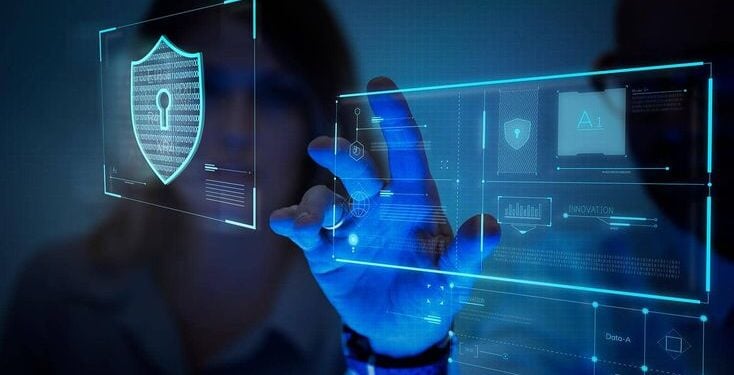Cybersecurity In Digital Era delves into the critical aspects of securing data in today’s technologically advanced world, shedding light on the importance of robust cybersecurity measures and the challenges faced by organizations and individuals alike.
As we navigate through the complexities of cybersecurity strategies, emerging technologies, challenges, and regulatory frameworks, it becomes evident that safeguarding sensitive information is paramount in the digital landscape.
In today’s digital era, cybersecurity plays a crucial role in safeguarding sensitive information, protecting privacy, and ensuring the integrity of data. With the increasing reliance on digital technologies, the importance of cybersecurity cannot be overstated.
Significance of Cybersecurity
Cybersecurity is essential to prevent unauthorized access, data breaches, and cyber attacks that can compromise personal information, financial data, and even national security. It is crucial for organizations, governments, and individuals to implement robust cybersecurity measures to mitigate the risks posed by cyber threats.
- Cyber Threat Examples:
- Malware: Malicious software designed to disrupt, damage, or gain unauthorized access to computer systems.
- Phishing: Fraudulent attempts to obtain sensitive information such as usernames, passwords, and credit card details by posing as a trustworthy entity.
- Ransomware: Software that encrypts a victim’s files and demands payment for their release.
Impact of Cyber Attacks
Cyber attacks can have devastating consequences on businesses, governments, and individuals. They can lead to financial losses, reputational damage, and legal consequences. For businesses, a cyber attack can result in disruption of operations, loss of customers’ trust, and significant financial costs for recovery. Governments face the risk of critical infrastructure being compromised, leading to potential national security threats. Individuals may suffer from identity theft, financial fraud, and invasion of privacy due to cyber attacks.
Strategies for Ensuring Cybersecurity
In today’s digital era, organizations face constant threats to their sensitive information and data. Implementing robust cybersecurity strategies is crucial to safeguarding assets and maintaining trust with stakeholders.
Different Cybersecurity Strategies Employed by Organizations
Organizations commonly employ a variety of cybersecurity strategies to protect their data and systems. Some of the key strategies include:
- Firewalls: Firewalls act as a barrier between a trusted internal network and untrusted external networks, controlling incoming and outgoing network traffic based on predetermined security rules.
- Antivirus Software: Antivirus software helps detect and remove malicious software, such as viruses, worms, and Trojans, from devices and networks.
- Multi-Factor Authentication (MFA): MFA adds an extra layer of security by requiring users to provide multiple forms of verification before granting access to systems or data.
- Regular Security Audits: Conducting regular security audits helps identify vulnerabilities and weaknesses in the organization’s cybersecurity posture, allowing for timely remediation.
- Employee Training: Educating employees on cybersecurity best practices and potential threats can help reduce the risk of human error leading to security breaches.
Proactive vs. Reactive Cybersecurity Approaches
Proactive cybersecurity approaches focus on preventing security incidents before they occur, through measures like regular security assessments, patch management, and threat intelligence analysis. On the other hand, reactive cybersecurity approaches involve responding to security incidents after they have already happened, such as incident response, containment, and recovery efforts. While proactive measures are aimed at minimizing risks in advance, reactive measures are crucial for mitigating the impact of security breaches and restoring operations.
The Role of Encryption in Safeguarding Sensitive Data
Encryption plays a vital role in safeguarding sensitive data by converting plaintext information into ciphertext that can only be deciphered with the appropriate decryption key. This ensures that even if unauthorized parties gain access to encrypted data, they cannot read or misuse it without the decryption key. End-to-end encryption, in particular, is essential for protecting data as it travels between devices or across networks, maintaining confidentiality and integrity throughout the communication process.
Emerging Technologies in Cybersecurity
Artificial Intelligence (AI), machine learning, blockchain technology, and quantum computing are revolutionizing the field of cybersecurity. These technologies are being leveraged to enhance security measures, detect threats more effectively, and protect sensitive data from cyber attacks.
AI and Machine Learning in Cybersecurity
AI and machine learning are being used to analyze vast amounts of data and identify patterns that could indicate potential security breaches. By continuously learning from new data and adapting to evolving threats, these technologies can improve threat detection and response times. Additionally, AI-powered tools can automate routine security tasks, freeing up cybersecurity professionals to focus on more complex issues.
Blockchain Technology for Cybersecurity
Blockchain technology is being utilized to improve cybersecurity by creating decentralized and tamper-proof systems for storing and sharing data. By using cryptographic techniques and distributed consensus mechanisms, blockchain can enhance data integrity and authentication processes. This technology is particularly valuable in securing transactions, identity verification, and protecting sensitive information from unauthorized access.
Quantum Computing in Cybersecurity
Quantum computing has the potential to both strengthen and challenge cybersecurity practices. On one hand, quantum computing can significantly enhance encryption methods, making it more difficult for cybercriminals to decrypt sensitive data. However, quantum computers also pose a threat to traditional encryption algorithms, as they can potentially break them with their immense processing power. As a result, cybersecurity experts are exploring new encryption techniques that can withstand quantum attacks in the future.
Cybersecurity Challenges in the Digital Era
In today’s digital era, cybersecurity professionals face numerous challenges that threaten the security of individuals, organizations, and nations. These challenges require constant vigilance and innovative strategies to mitigate risks and protect sensitive information.
Impact of IoT Devices on Cybersecurity Vulnerabilities
IoT devices have revolutionized the way we interact with technology, from smart homes to wearable devices. However, the proliferation of these devices has also introduced new cybersecurity vulnerabilities. The interconnected nature of IoT devices creates a larger attack surface for cybercriminals to exploit, leading to potential breaches and data compromises. Ensuring the security of IoT devices is crucial to prevent unauthorized access and protect privacy.
Growing Concerns Surrounding Data Privacy and Protection
With the increasing digitization of information and the rise of big data, concerns surrounding data privacy and protection have become more prominent. Data breaches and cyber attacks have highlighted the importance of safeguarding sensitive data from unauthorized access and exploitation. Individuals and organizations must implement robust cybersecurity measures to secure data and uphold privacy rights in the digital age.
Role of Regulations and Compliance in Cybersecurity
Regulatory frameworks play a crucial role in ensuring cybersecurity standards are met in the digital era. These regulations provide guidelines and requirements that organizations must follow to protect sensitive data and prevent cyber threats.
Importance of Compliance with Regulations such as GDPR and HIPAA
- Compliance with regulations such as GDPR (General Data Protection Regulation) and HIPAA (Health Insurance Portability and Accountability Act) is essential for organizations to safeguard personal and sensitive information.
- GDPR focuses on protecting the personal data of individuals within the European Union, while HIPAA sets standards for the protection of healthcare data in the United States.
- Failure to comply with these regulations can result in hefty fines, reputational damage, and loss of trust from customers and stakeholders.
Challenges of Maintaining Compliance in a Rapidly Evolving Digital Landscape, Cybersecurity In Digital Era
- One of the main challenges in maintaining compliance is the dynamic nature of cyber threats and technologies, which constantly evolve.
- Organizations must continuously update their cybersecurity practices to align with changing regulations and address new vulnerabilities.
- Compliance requirements can be complex and resource-intensive, requiring dedicated efforts and investments in cybersecurity measures.
- Ensuring compliance across multiple jurisdictions and industries adds another layer of complexity for organizations operating globally.
In conclusion, Cybersecurity In Digital Era underscores the ongoing battle to protect data from cyber threats, emphasizing the need for continuous innovation and vigilance in the face of evolving risks.












